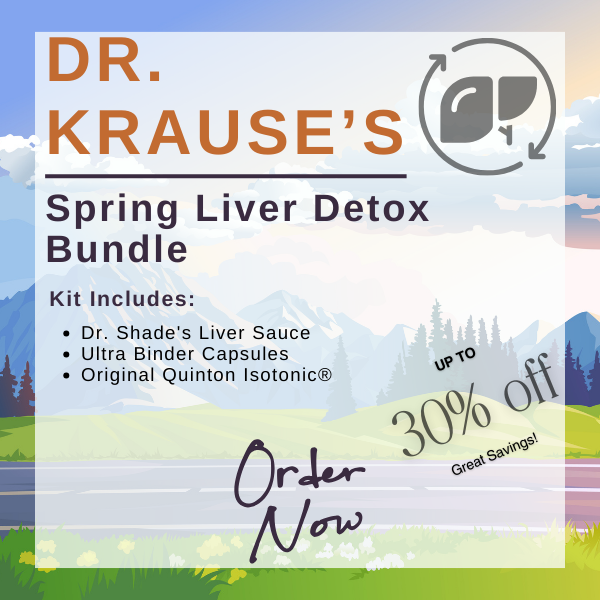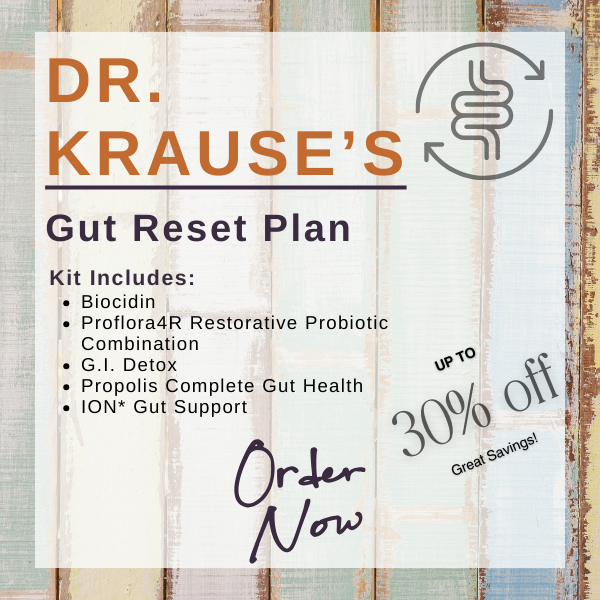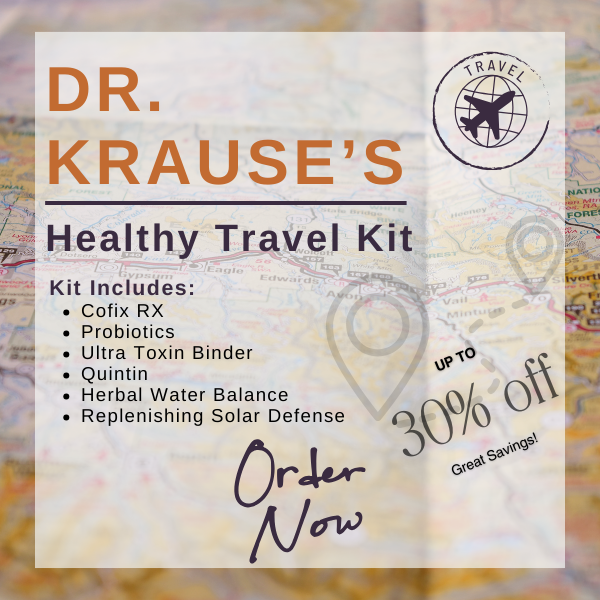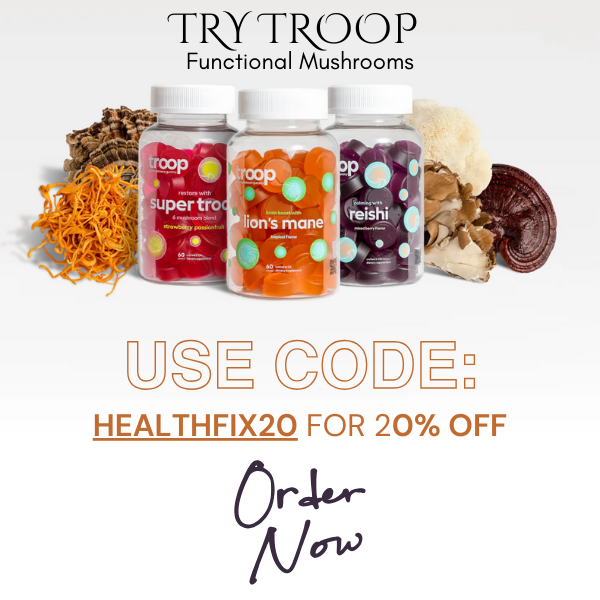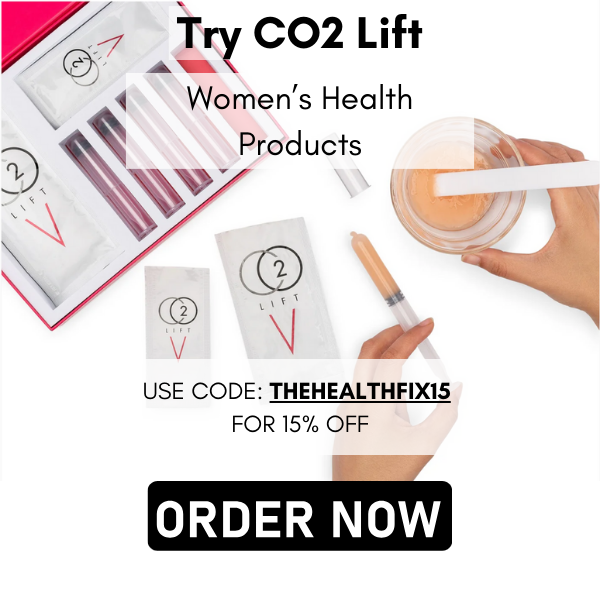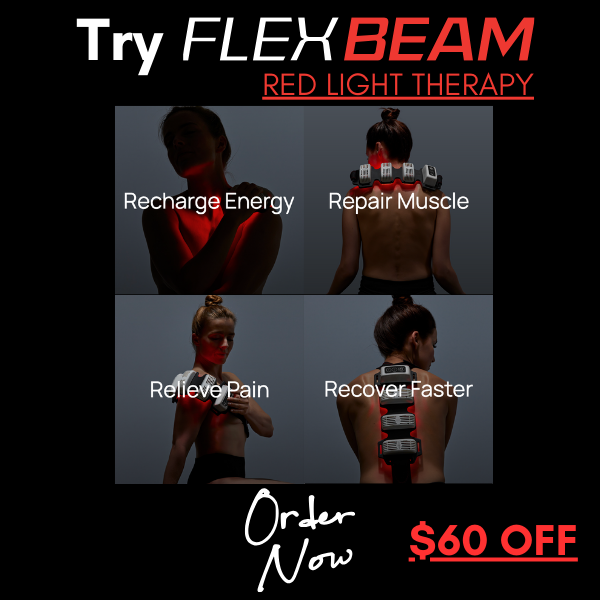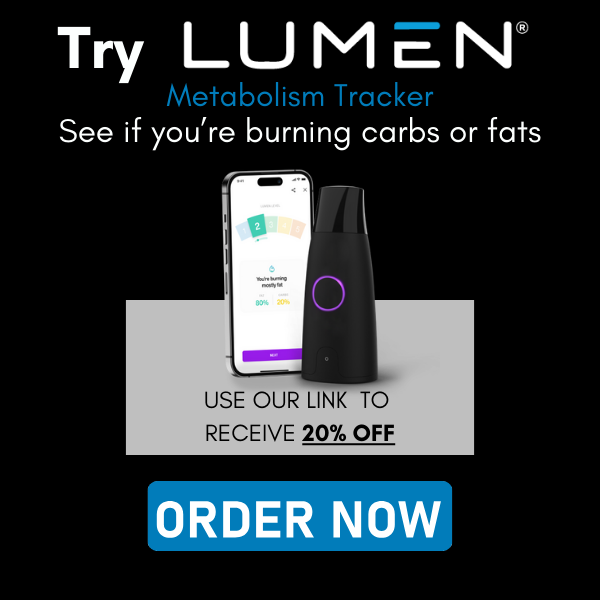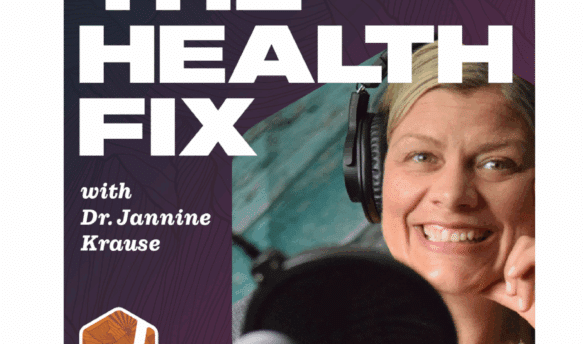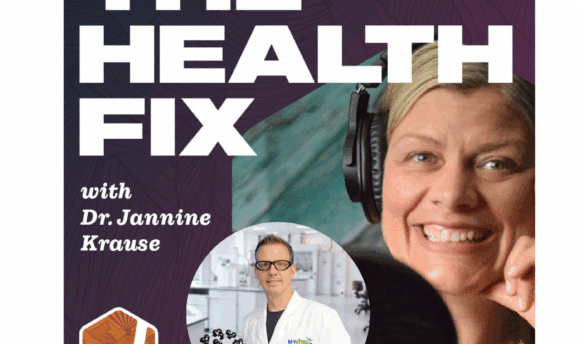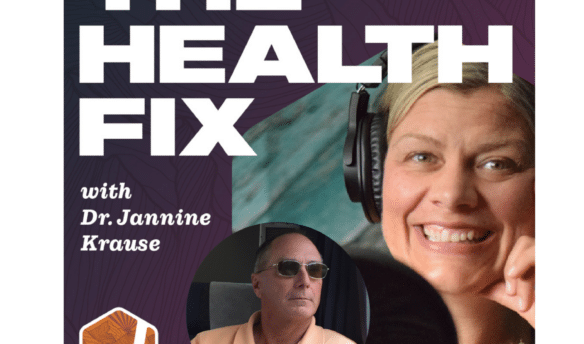Chronic back or joint pain and looking for non-surgical pain relief? Recent injury that you want to heal up quicky? Wanting to look and feel amazing and wondering how you can take your health to the next level? Curious about the regenerative effects of stem cell therapy, exosomes and peptides? Dr. Jeffrey Gross, MD is a neurological surgeon specilizing in athletic injuries and spine procedures, in addition to longevity and biohacking therapies. He’s certified by the American Board of Neurological Surgery and is a member of several prestigious surgical societies. Since 2020, Top Doctor recognized Dr. Gross as a leading Neurological Surgeon. He also received HealthTap’s 2022 Top Doctor Award as a top Neurological Surgeon in the U.S. Dr. Gross founded ReCELLebrate to focus on anti-aging and regenerative medicine. In this episode of The Health Fix Podcast, Dr. Jannine Krause interviews Dr. Jeffrey Gross on how he’s using modern biochemical treatments to help folks looking to improve their longevity and vitality as well as for those interested in non-surgical options for chronic pain and injuries.
Dr. Krause’s Protocols
Instructions Included
Traveling soon? Looking to detox or reset your gut? Try one of Dr. Krause’s Fullscript plans.
What You’ll Learn In This Episode:
- How stem cell therapy gives your body information to restore & repair
- Why you need healthy stem cells for best effect & how they are being harvested
- What you can do to activate your own healthy stem cells
- How stem cells are paired with regenerative biologics like PRP (platelet rich plasma) for rejuvenation
- Why stem cells from fat tissue aren’t the best option for repair and regeneration
- How exosomes are being used to activate stem cells and boost cell communication and enhance rejuvenation
- What it looks like to use exosomes, IV therapy and stem cells for longevity
- How targeting bones helps the body restore cartilage in joints
- The connection between bone density and longevity
- Advances in dry eye syndrome
- Investments for regenerative therapies
Resources From The Show:
- Dr. Gross’s Website – ReCELLebrate – https://recellebrate.com/
- Mention The Health Fix Podcast and for a complimentary consult
- ReCELLebrate on Instagram
Our Partners
Podcast Transcript
JANNINE: [Intro] Welcome to The Health Fix Podcast where health junkies get their weekly fix of tips, tools and techniques to have limitless energy, sharp minds and fit physics or life.
JANNINE: Hey, health junkies, Dr. Jannine Krause here. I am looking for some help from you all. And what I’m looking for is some inspiration, some inspirational stories that I can share of men and women, defying aging and defying it by crossing things off their bucket list that maybe they thought they could never do, maybe coming back from an injury, starting something new, like skiing at 40 years old. Whatever it may be, I want to know about these stories and I want to interview folks. Maybe it’s you, maybe it’s someone you know, doesn’t matter. I want to help inspire folks out there that you don’t have to follow social aging norms. You can defy stuff. You can get better as you get older. You can make so much progress at any age. You can build muscle at any age. You can have a stronger heart at any age and you can crush all those things you want to do on your bucket list. Just because your older doesn’t mean you have to give up on yourself and your dreams. And this is something that I want to share and inspire folks with. And so, if you have a story or someone you know, email us at info@doctorspelledout. So d-o-c-t-o-r-j-k-r-a-u-s-e-n-d.com https://doctorjkrausend.com. Let’s spread the word about how amazing life can be as you get older and all the cool things that you can do. Alright, health junkies. I’m counting on you. Let’s get some emails in and let’s get some awesome stories on the podcast.
JANNINE: Hey health junkies, on this episode of the Health Fix podcast, I’m interviewing Dr. Jeffrey Gross. He is a neurological surgeon who specializes in athletic injuries and spine procedures. Plus, he’s offering longevity and biohacking consultations as well. And really awesome treatments that we’re going to be talking about today. Since 2020, top doctor has recognized him as a leading neurological surgeon. He’s received HealthTap’s 2022 top doctor award as the top neurological surgeon in the U.S. And he’s offering all of his services in his clinic known as re-celebrate where he’s focusing on anti-aging and regenerative medicine and things such as exosomes, things such as stem cell therapies and all kinds of other cool stuff and basically considering surgery as a last resort. So he’s got a lot of fun things to talk about and he and I geek out for sure in this podcast. So if you’re looking for alternatives to surgery, you’re wondering how stem cells work. You’re wondering about exosomes, you’re wondering about peptides. This is the podcast for you. So let’s introduce you to Dr. Gross and how he is helping folks with their chronic conditions and extending health and vitality. Hey, health junkies. I have Dr. Jeffrey Gross on today and I’m super excited because I love talking about stem cells and in my practice more than anything. And of course on the podcast, we’ve had a couple conversations. But today we’re going to dive a little deeper. So Dr. Gross, welcome to the HealthFix podcast.
DR. GROSS: Thank you so much. I’m happy to be here.
JANNINE: Well, gosh, I took some time, of course, before podcasts like I always do to stalk everyone. And I was looking at your website, ReCELLebrate by the way. Love the name because it’s just this celebrate life in the back of my mind and how we can use ourselves to revive ourselves. And I think one of the biggest things I always love to ask folks when I get started talking with them is how do you choose stem cells as being the future of your medicine? What happened? Did they come to you? Did you go to them? How did it work out?
DR. GROSS: Yeah, I’m a little bit of both. The short version is, you know, I’m a recovering neurosurgeon. I was spine fellowship trained and I was doing neck and back pain care, disc problems, nerve issues, all the way from therapy to injections to surgery in a multidisciplinary setting. And I noticed that there was a gap and I’ve noticed it for many years, but I finally did something about it. And that gap is a lot of people do therapy. They give a time, they take medications, they might even do some, I’ll call them cortisone injections, just vaguely speaking. And then if those things aren’t adequate and they still suffer, the next step is to talk about surgery if there’s, if they’re candidate for surgery. But, you know, like most people, a bit of wants a surgery, let alone a big one or let alone one that involves metallic implants and things like that. So I was looking to fill that gap between what we call the basic early steps and the more significant serious steps. And patients brought it to me. They would say, “What about stem cells?” I’ve heard about stem cells. They should fix everything, right, doc? Not exactly the case. But, at some point I got frustrated enough with not having enough tools for patients after being in practice at that time, about 20 years, being trained by people in the 90s who were trained in the 70s. You know, things just weren’t moving fast enough. So I went back, I retooled, I’m a nerd. It sounds like maybe I’m in a good company here.
JANNINE: You are in good company.
DR. GROSS: I educated myself and I jumped in with both feet, like some of my colleagues who even interviewed. And now we have some additional things in the toolkit to offer people before and hopefully to avoid big open surgeries.
JANNINE: Makes sense. Makes sense. You know, I look at it in stem cells as being all the possibilities. And I think when I read ReCELLebrate, I’m going to bring this up a couple times. I just love the website and your business. And when I thought I was like, you know, there are so many things that we can celebrate with this. And so many things we can get back in terms of function. And having a history of working with a lot of the Seahawks, when I was working in Seattle, there for quite some time, a lot of them would get stem cell treatments. And in the off season, of course. And I would see a lot of chronic injuries start to go away and really rejuvenate. And I think I came to the same places with acupuncture that I was doing in herbal and diet and things of that nature. We can only get so far. And then we have to test the body a little.
DR. GROSS: Yeah. That’s the challenge and also the opportunity, right? So I agree with you. I mean, listen, we’re tapping back into what our body has already been programmed to do. And it loses its steam and being able to do it over the years. And we’re just tapping back into that blueprint that our DNA has codes for genes that help ourselves repairs DNA tells us cell when to make new proteins, what kind of proteins are those proteins in defense of the body, meaning inflammatory. And or are they restorative, reparative, you know, excellent maintenance functional mode, which is more anti-inflammatory? And the problem is in our world, we’re exposed to so many pro-inflammatory things in our food, our water, our air, our electromagnetic waves, what have you, you know, not exercising as well. And the in our body has this chronic, smoldering inflammation. So the entire biology of stem cells and the possibilities of stem cells come from its ability to switch cells back into that better mode, that anti-inflammatory, reparative, restorative, more youthful mode that heals and restores and repairs and regenerates. So that’s the basis of regenerative medicine and the basis of anti-aging medicine.
JANNINE: Yeah. You know, two things you said that and one in particular that I think a lot of people are going, okay, stem cells, okay, they can, I have them already inside me. We’ll talk about that where they’re coming from. But also the other big thing is that our body can do this naturally. It has the potential to recreate more stem cells, but we can give it a little boost. And a lot of folks will come to me and say, Doc, how am I going to harvest good stem cells from myself if I’m sick already? How does this work or how— what do I do? And this is the loaded second part of this question that we’ll get to in a second is, how do I get my own stem cells healthy enough to be useful for me? So let’s start with first stem cells and can we use ones in our own body that while we’re sick or what do we need to do to get there?
DR. GROSS: You can, but I don’t know that it’s the best thing to do. If you took your car to get the oil change, you’re not going to put the old oil back in it. It might be a little oversimplified, but it tells the story here. If your body is exposed to these inflammatory, pro-inflammatory environmental and lifestyle problems, and your cells are inflamed, your stem cells are also exposed to that too. And even though they have more potential than your regular differentiated cells, meaning cells that already have declared themselves what organ are going to be part of, they certainly don’t have the function that an unadulterated stem cell, a youthful cell that’s not been exposed to all this biochemical trauma would have. So although you can harvest your own stem cells and put them back in just in a concentrated way, and they will help some, they certainly are not going to have the impact of a healthier regenerative stem cell or stem cell type biologic.
JANNINE: Okay. Okay. So this is where I think a lot of folks now, and I mentioned this on previous podcast, you know, okay, where do we get the good, healthy stem cells from? And how do we transition from getting those in the body and then getting ours to follow suit and us to make some of our own healthy stem cells? Is it possible? You know, I think a lot of people wonder, is it even possible, Dr. Gross to be able to get our own stem cells to reboot themselves over time?
DR. GROSS: Oh, sure. There are many things you can do to, you know, we call it, I hear it resell rate, we call it activate your stem cells. For example, yoga is known to boost stem cell activity in your own body. Yoga has a calming, mindfulness effect and the stretching, pulling on the tendons at the bone junction, stimulates some of the bone cells to help the bone marrow and the marrow is the richest source of stem cells. You know, meditation, breathing, restorative sleep, you know, a proper diet, not just what you read, but when you eat it and how you eat it, protein, exercise, other hormesis. Can I use that word here, hormesis?
JANNINE: Absolutely.
DR. GROSS: There are more hermetic activities to give a little bit of stress to the body that builds resilience. All these things are, you know— help your own stem cell activity, but it helps you be healthier anyway. These are the things our grandmother told us to do right, get enough sleep, eat right,[laughter] you know, exercise. It’s very basic.
JANNINE: You know, it’s funny, it’s basic, but at the same time, you know, we’ve since like diverted from that and came to this land of like, I’m going to take a supplement or a pill for all these different things. And sadly, you know, the more I get into it, and I don’t think it’s sadly, it’s, I’m actually appreciative of it. We’re going back to basics and going back around full circle, I guess you could say.
DR. GROSS: Yeah. Yeah, I agree. No, I agree with that. And we have, you know, what comes first here, the chicken or the egg right? We have people that are very interested in what we call it vaguely regenerative medicine, it’s stem cell type medicine. And I don’t want to deliver to them a regenerative biologic unless their own body is optimized. So, so we have that problem too. But then of course, if they optimize by the right supplements diet, sleep, mindfulness, breathing, everything, they may not need that. The external source, the exogenous source of a regenerative biologic. But the older we get, the more inflammation we accumulate over time, certainly the less effective our own cells are, even if we are optimized and certainly our own stem cells. That’s why I, I favor external sources of stem cells. However, I should mention that there are growing interest in harvesting your own stem cells early in life and banking them. And there is a company that does that. I haven’t yet begun to participate with them because these days when we can get the perinatal sourced biologics so readily and easily and ethically and it’s so simple, you know.
JANNINE: Absolutely, absolutely. I mean, why not? Why not? So, of course, I’m going to ask, you’re getting, so let’s talk about your sourcing and let’s talk about that a little bit with folks so that they can understand where the stem cells are coming from. And then we’ll talk about procedures a little bit and we’ll talk about what kind of things stem cells are amazing for. So folks can get a little idea of maybe if they’re suffering with something and they’re like, hmm, could this work for me? Let’s dive into that a little bit.
DR. GROSS: Sure. So, I actually obtain regenerative biologics. I keep, we talk about stem cells, but we’re actually using other things and maybe we’ll open that up as a whole.
JANNINE: Yeah, please do.
DR. GROSS: Yeah, I’ll say that for just a second, but these are perinatal sourced. These are from mothers in the United States who are delivering their babies by C-section. And instead of throwing away placenta, amniotic, fluid, umbilical cord, which is really medical trash, it’s about saved with their permission and trash becomes treasure. And these are done by, you know, ethical labs. All over the country, they are FDA certified and compliant, ironically, because the use to these tissues has not yet been approved or unapproved or what have you by to for us to make claims about them. So just as a disclosure here, anything we do talk about where we apply these, I’m not allowed to say that they cure or treat any disease or condition. Of course, doctors don’t guarantee anything anyway. So it’s, it’s, but to be compliant, I wish to be, of course, these are obtained from these labs. They are screened and tested. These are consenting mothers. It’s completely ethical and proper. And they’re all over the country and they have different levels of how they screen people or they get their donors and what have you and we, and there, there’s always a new lab with a new and better way to do it all the time. So we, we use different suppliers.
JANNINE: Nice. No, I think that, I mean, obviously, we, we can’t make any claims. No one wants to get themselves in trouble here, but definitely understanding that we have stem cells, but we have other biological agents with it. I think that’s something that I haven’t dove into at all and would love for you to talk a little bit about what other components we have in the mix there.
DR. GROSS: Sure. So I really divide, we’ll call it regenerative biologics into three main categories. The most basic categories called PRP or platelet-rich plasma and most people who’ve had a maybe a tennis elbow or a twist of knee or something have, have gone to a physician or a physician extender and have these injections where they take, you know, vials of blood, they spin it in a tabletop centrifuge which, which separates out the red cells from the other cells in the plasma and they, they accumulate from the tubes of the plasma and the plasma is rich in a type of cell from the bone marrow called platelets. And in there are a bunch of growth factors and those are concentrated and injected back into an area of inflamed need to concentrate your own body’s healing potential in one space. So it’s kind of interesting, right? Because here we are, an adult body that can heal itself. If you cut yourself at heels, of course, why do we need to take all that and concentrate it on our own blood supplies should do that for us? Well, it, it, it— where it helps. Usually you need to go for two or three times and even know that that is also not FDA approved for claims to be made. Some, some health insurance plans do now cover it. So that’s some progress.
JANNINE: Yeah. Right.
DR. GROSS: So and it, it’s found to be helpful if it helps people avoid cortisone injections, which cortisone can help in the short run, but in the long run can actually break down some of the tissues of various joints. It seems to have some benefits. There are newer studies being published all the time supporting the use of PRP plus those in the cosmetic world and I know you’re, you’re also a skin nerd. I think I heard you say once.
JANNINE: Yes.
DR. GROSS: The, you know, you’ve heard of the vampire facial PRP and micro needled into the face is a vampire facial. So, so that’s one use. So that’s the very basic source and you are your own source of the PRP. We don’t, we can’t obtain PRP from other sources, although it might be a business idea. But having said that, the next level up is stem cells, right? And stem cells are have not yet decided what type of tissue they are going to be. They’re encouraged by needing areas in the, in the body body calls for the stem cells. And your body has many places where you make stem cells. The richest source source would be the bone marrow. Other source might be fat, although I’m not a huge fan of fat based stem cells because fat is associated, obese tissue is inflamed tissue. And I don’t want stem cells that have been sitting in a soup of pro-inflammatory molecules. I want stem cells, you know, from the, from the purest source, you know, the spring water, bottled at the source, you know, the bone marrow. That’s my favorite source. Now, it’s painful to get bone marrow based stem cells. That requires a, a bit of a significant needle that goes into your bone. And, and but that’s a common practice. They’ve been doing this in Europe for over 20 years in in Asia. We’re just a little late to the party. But there are many clinics throughout this nation where you can get that today. You can get your own stem cells delivered back to an area of need, like a joint, like a ligament tear or a tendon tear or something like that. And that’s very common. A lot of athletes do that.
Still on that second set of regenerative biologics, working up the, the latter, at least in my mind, would be stem cells from another source. And the, the most unadulterated purest source would be from fresh out of the womb, right? So this is the umbilical source of stem cells. Because those stem cells and whatever growth factors come with that, you know, the amniotic fluid. And what have you, those stem cells have not been exposed to years of, you know, what’s wrong with our environment or our behavior and lifestyle, you know, whether it be exposed to tobacco or too much alcohol or what have you or, you know, and, and so this is the best, you know, the best healthiest stem cells that you can find would be from this peri natal source around the time of birth. And there’s something very magical about amniotic fluid. It occurred to me in my residency a million years ago, almost that there was a procedure that was becoming popular in the 90s where surgeons would identify spina bifida in fetuses by ultrasound. Spina bifida is an open part of the spine during the development. It can be associated with not taking enough peri— perinatal vitamins and things like that. They could actually go into the womb, into the fetus and, and close basically just put together that, that open area in the spine, close the womb, close the skin and then, you know, let the, let the baby keep cooking until it’s ready to be done. And when the baby comes out, they found little, if no, scarring where they close that defect in the baby’s back.
JANNINE: Wow.
DR. GROSS: Right. Wow. Wow is what occurred to me back then. So I said, there’s something very magical about the amniotic fluid. And the amniotic fluid is rich in growth factors and something called exosomes. And I’m going to say that one more time just in case no one in your audience has heard it, exosomes. These are nanoparticles. So where a cell, a stem cell or other cells in your body, most of them are measured in microns. A micron is, is one one thousandth of meter. A nanoparticle is one one thousandth of that. So it’s one one thousandth the size of a cell. So there’s very, very, very small. And the exosome is something a cell makes and it sends out a little bubble, a little bit of membrane and a little bit of growth factor in microRNAs. And it is a communication from one cell to another cell. It’s like a neighborhood watch program. You get on your phone and you talk to your neighbors, hey, did you see the burglar? You know, [laughter] I’ve lost my dog. It sends a signal to the neighboring cells and thousands of these signals. So if a stem cell is delivering a signal, particularly a perinatal stem cell, it’s going to be a youthful growth restorative regenerative signal anti-inflammatory signal. And it sends those growth factors into neighboring cells. Those growth factors get into the nucleus and affect what genes are opened up for use. It doesn’t change the genes because our genes are our genes, but some of them are turned on, turned off. They have little promoters. They have transcription factors which say, hey, let’s get those anti-inflammatory genes going. As opposed to the cranky old now, just, I just kind of sit here and smolder genes. So this entire signaling is what we’re tapping into. And that third level of regenerative biologists are called exosomes. So we have been using here at resell rate more than stem cells is the stem cell derived exosomes from perinatal source. And I like these a little better. If you’ll let me just keep running with it. I like these better. They’re smaller so they can travel further in the body. For example, they can cross the blood brain barrier and get into the brain and spinal cord, whereas stem cells struggle to do that. They’re found to last longer. I can give a more concentrated dose than it can for stem cells for a lesser cost. So interesting that when stem cells are delivered to someone, they really only last 10 to 14 days, the original cells. Those stem cells, the effect of those stem cells can last many months, or even take care of an issue, even though the effect is done, the issue is taken care of. So if the stem cells only last one to two weeks, why does the effect last so much longer? Well, it’s because those stem cells that are delivered are giving off exosomes for probably a week or two. Exosomes have created this massive signaling change to a specific area in the body or the entire body, depending on the delivery, right, intravenous versus injection or what have you. So I’m a big fan of these. We’ll call nanoparticles or exosomes or cells signaling of stem cells. And that’s why I also use the phrase stem cell activation because exosomes can activate your own stem cells and your own cells better than we could do through any other method, at least in my mind.
JANNINE: You totally just schooled me on a lot of stuff here because I didn’t know about, like— I knew, you know, there wasn’t a huge half-life, let’s call it that, we’re a length of time that the stem cells live. But I didn’t know as much about the exosomes and how they can kind of broadcast throughout the system and more or less it sounds like extend, if you will, the benefits of a treatment, kind of like a booster to it or something of that nature.
DR. GROSS: Right. I think in the big picture, the stem cells are the delivery method. They’re the middlemen.
JANNINE: Yes.
DR GROSS: And the exosomes are doing the regenerative work at the end of the day. And I think if you look at the constituents of M, they got a fluid, of platelet-rich plasma, of stem cell, you know, a vial of stem cells, there are exosomes in all of those. So that’s why I like the concentrated exosomes. We can get a very high particle count in a very small dose. It’s easy to deliver. And the beauty is it’s just over half the price of a similar dose of stem cells.
JANNINE: Wow. Huh. Okay. Okay. So I’ve got my brains going now. And of course, I know that a lot of people are probably thinking like, okay, Dr. Gross, so tell us, you know, how much is actually going in? What’s the, I mean, venous delivery method? I think folks kind of, let’s get folks like a vision of they come in your office and they’re like, hey, Dr. Gross, I just want to live until I’m 225. [laughter] Tell me, tell me what, you know, what, what can— what’s it going to be like if I just coming because I want to have this procedure done. You’ve screened me for, you know, eating healthy, doing all the things you want, you know, my body to, to, let’s put it this way. My body’s not inflamed. I’ve done the things I need to do to, to manage it. And I just, I want to try this out. What’s it look like for treatment? How do you guys take folks in and sit them back and what happens?
DR. GROSS: So this is what we call this the anti-aging or bio-hacking part of my practice. And it’s a fun crowd because they’re totally into this, right? And I’m one of them. I love this stuff for myself as well. And we have people that come in from all over, but the way it works is usually we, we have reach out to us. We do to a zoom like this. Of course, we don’t broadcast it to everybody. It’s a private zoom. And, you know, we have them thought some basic forms and we go through and make sure they’re optimized. How’s your diet? Because we don’t want to spend this time and effort and money and regenerative, anti-aging regenerative journey unless they’re already doing what they can do on their own. Because if we’re going to deliver these to someone, I want them to be in the best environment. So that could be hormone optimization. It could be, you know, reducing stresses. It could be right supplementation, some dietary changes, protein intake, things like it could be a lot of things. So we do a lot of remote workup. And if they’re interested and we start to give the full informed consent, we talk about the range of things we can do. And usually it’s, it’s, we do an IV approach. So IV exosomes and we should combine it with high dose vitamin C. And because exosomes are going to help you stimulate collagen production and, you know, good metabolism vitamin C is useful for collagen making. So we haven’t come out to the clinic here. And I’m located currently in Las Vegas. That’s where we’re doing this. And Henderson Nevada, technically, but you suffer from Las Vegas. And people don’t mind coming here for a weekend and taking a show, having a nice dinner, you know, maybe throwing some bites. And, you know, this is something we can do quite easily. Now, that’s, that’s very simple, right? IV. Most people who have had the IV include myself, feel something for a few months and then the effect kind of wanes from then, which sort of goes along with what we understand about exosomes. You know, so the whole body is getting this. We see people feeling a range of increased energy. It’s a better restorative sleep, improved libido, improved recovery after workouts, mental clarity. I’ve had some elder people where their aches and pains are improved. Have one guy with gray hair turned dark again. So all kinds of very interesting things. And we, we— personally, I do it for myself every three to four months because that seems to be the cycle. Right, after each sequential IV, I don’t feel the wow factor as much because I think I’m already in a decent maintenance mode. We didn’t want guy that didn’t feel much at all, but he sent me, he sent me a snapshot of his HRV. And I don’t know if you’ve gone over that with your audience, but heart rate variability of something you can track with a wound device or an aura ring or there’s actually an app for my Apple Watch where you can do it as well. And he said, listen, I normally run in the 60s. He jumped up to the 90s, which is a big move on HRV. So we know it’s doing something that’s positive on a biological level. And what we’re doing now also is we’re doing biological age tests, which you know, look at cellular markers and inflammation and other things and some lab markers. And we’re doing those and then we’re, we have a group of people where we’re doing some, some of these IVs. And then at the end of a year or 18 months, we repeat the biological age test and we’re looking to see what that changes. You know, can we reverse someone’s biological age as measured through IVX assumes in addition to optimization? So we’re looking at this, we’re studying it, you’re going to hear more about that. That’s just the anti aging group, you know, here for that. We also use IVs for other reasons. People with autoimmune issues like, like to have reduced inflammation, their body’s benefit from that. Lime disease might be another thing we, we would try to help people heal recovery from stroke, heart attack. I know there are some who apply this for autism, although it’s hard to deliver. Turns out that inhalational breathing treatment or nasal spray exosomes have potentially a better delivery to the brain. So autism, stroke, other diseases of the brain with an inflammatory component like Alzheimer’s should respond to this type of, you know, helping against the inflammation of that disease.
JANNINE: All right. You just opened a can of worms in my brain.
DR. GROSS: Sorry.
JANNINE: But I interrupted you.
DR. GROSS: No, no, I was running on and I would rather be this, you know, if you have dialogue.
JANNINE: Oh, you’re fine. You’re fine. I mean, look, my brain just went on fire with the, okay, exosomes in the nose. I did not know about this. This is also learned. I’m a great learning experience for me because I’m thinking about to some folks that— with mold and things of that nature and just some of just general degenerative changes that I’ve seen with kind of, I call it mold brain, but I think there’s a combination of inflammation, slash aging, slash mold. Or have you, have you done anything in that department with it?
DR. GROSS: Not yet from mold. I, you know, I do a deep dive before we do anything new. I want to make sure there’s some literature to back this up and, you know, most things, I’m not the first to do this or try them. And, you know, I would see what’s been done out there. We don’t want to give exosomes to someone and turns out mold, love exosomes and it is flourishing. We don’t want to make sure that’s safe and that there is some good scientific background. And most of those studies are not from the U.S., right? We’re suppressed here on that. So, but we do draw from other countries’ literature. In fact, if we get into joints, you know, we draw from literature from France that’s got over 15 year follow-up published two years ago. So, this is not new. I’m not the first to do this.
JANNINE: Yeah. This is good. I love for folks to hear about that in terms of one suppression of data here, but also about other folks who have been doing this for years. So, here’s the other crazy thing that I thought of when you said exosomes of the nose. Of course, I’m like, always looking for, I’ve talked about it briefly on the podcast at some points, Cerebrolysin, which is for folks who are listening to Nootropic, that’s typically injected. But I’m like, okay, would exosomes spray up the nose for someone who’s healthy? We’ve ran all the things we know that there’s nothing going on. Has anyone done research on helping just overall, like, limitless brain factor of concentration focus, like focusing with, we’re going 80-D-D-80-HD maybe?
DR. GROSS: So I haven’t looked that up specifically on a big fan of Nootropics and peptides. And what we’re really crossing here, if we were to look at the Venn diagram of all this information is. Yeah. If there are certain peptides, Nootropic peptides that can help enhance this, you’re talking about designer exosomes, which I’ve spoken about many times. Basically, you’re taking exosomes, you’re adding into them Nootropic peptides and delivering them through nasal or even IV for that matter. And you’re getting an enhanced effect. There was a paper I think earlier this year or late last year on designer exosomes, a chock full of specific messenger RNAs for skin rejuvenation. So this is not far fetched. We don’t have those yet. We’re not allowed to manipulate biologics in this country. So we’re not going to be the first to have those. But listen, you know, why not? Why not have something like that designed specifically in a precision way for a person’s individual needs to make sense? So has it been research? I’m not certain. But it’s a wonderful idea. I love it.
JANNINE: I want to go down that rabbit hole someday. Well, we’ll make sure we keep in touch that we can chat about those things. Now you are starting to talk about joint regeneration. And I think this is where folks really think about stem cells in the first place. I kind of went down to biohacking department. But of course, you know, thinking stem cells thinking about regenerative biologics for the joints and in tendon, ligaments. We’re going to share a story. I would love to hear some stories of folks and different things.
DR. GROSS: Yeah. So, you know, this makes me full circle to why I got into this to do that for the spine. And really joints and spine. I’ll lump them for now. So, we are the low hanging fruit in this field because they do — we have wonderful responses in great scientific literature with long-term follow-up for reducing inflammation and improving joint health and improving even cartilage generation and restoration. And what we call surgery salvage, avoiding surgery, basically. Here’s the secret sauce. I attribute to the French study from Dr Philippe Hernigou. I’m sorry that three years of high school French probably still caused me to mispronounce his name. But he took regenerative biologics. And he actually was hard — this is harvesting people’s own concentrated stem cells called B-MAC bone marrow concentrate. Because there were not exosomes available and it was easy just to harvest these. And about 17 years ago, he made a study — an orthopedic study where he found — I think it was about 100 people who were told they were either bone on bone or had osteoarthritis and there’s — some of them probably told both of a knee. It was a knee study. And he said, So these people were recommended knee replacement because that’s what happens in this country. You get this degenerative painful knee and you’re told you need a knee replacement, right? So he took 100 people who were told they were recommended knee replacement and said, “Wait, before you do it, would you be interested in joining my study, we’re going to try stem cells.” And I imagine it wasn’t difficult for him to have 100 people sign up for that study. And half of them received stem cell injection in the — I’m going to call it the soft squishy part of the knee called the meniscus. They called it the joint space or the interarticular space. Ok. And half of them received injections in the bone just above and just below the squishy part. We call that the subchondral bone. Can you guess which group did better?
JANNINE: No, I can’t. Which one did better? I’m curious. I’m curious. Because in my head I’m thinking two different directions and I’m like, well, bone has more blood flow technically.
DR. GROSS: Right. I like the way you’re thinking. You’re on the right, you’re warm.
JANNINE: Okay. Okay. All right. Give us a scoop. So what’s the story? What happened?
DR. GROSS: So the — this was published at the five-year, ten-year — recently, a couple years ago, the 15-year follow-up mark. So if you know it’s going out 15 years, they’re measuring something that’s very interesting. So in the five-year study, they had roughly equivalent results where somewhere in the 80% range of those patients did well and did not need surgery. They used — they used it, what’s called a Kaplan & Meier survival plot, if you’ve ever heard of those, right? Usually they — you start with 100% survivors and these are needs that are surviving not people. And the — if people fall out, allow my knee didn’t work, I got to have the knee surgery, then they didn’t survive. Their knee didn’t survive. So about 80 to 85% were — in both of those groups where the injections were done at five years. At 10 years, they started to separate where the bone injection group was still up in the 80s and the — in the joint in the soft part of the meniscus area was declining into the — the thing was the 60s at the time. And at the 15-year follow-up, now they have a significant separation in the graph. Still in the 80s in the bone injection group, but in the — I think it was about 25% surviving in the knee injection — in the joint injected group. So they clearly demonstrated that injecting the bone is meaningfully superior than injecting the joint. And this makes sense, right? Our joints, the — the — the biologic cartilage in our joints, or — and I extrapolate this to the spine, the discs of the spine, these are — these are collections of cartilage-type proteins or proteoglycans. There’s very little blood flow, there’s very little biologic activity going on in these soft squishy parts. The — the party is happening in the bone marrow. And the bone marrow right up to the edge of the joint or the disc. Because that’s where the disc — if you speak of the spinal disc, that’s where the blood flow comes from. That’s where the nutrients come from. That’s where the oxygen comes from. So remember when we were fetuses, that joint was made and fabricated by the stem cells in the bone marrow. So it was almost an oversight, because a lot of people have tried stem cells in the spine, they go right to the disc.
JANNINE: Yes.
DR. GROSS: And they have some decent results, because they probably release exosomes and get back into the bone marrow. But my own experience echoes that of the French study, in that treating the bone with the regenerative biologics is — we have superior results. I have before and after MRIs of knees where we have restored the thickness of the cartilage. And with it, of course, improvement in the symptoms. So my goal here is to help people with hip and knee and ankle and spine and elbow and other problems by helping their bodies regenerate, restore their own cartilage. I’m not doing the restoration. I’m helping them tap back into the blueprint that they used when they made that joint as a fetus in the first place.
JANNINE: So cool. So cool. I’m glad I was warm on that one, because I was thinking like the tissue is kind of dead-ish, you know, not dead in terms of the meniscus. But there’s not a lot going on. That’s what’s like, it’s got to be the bone. And funny enough, like, even going back to Chinese medicine with some of my acupuncture protocols, like they would have us get the needles to tap the bone at insertion points of ligaments and what not, because that’s what they saw even back — I don’t know, thousands of years ago actually helped put things. So this makes perfect sense. This is the next evolution from the simple needle stuff, which is so cool. So one of the questions I have now is a lot of people have been through some traumatic injuries, right? Maybe they rolled a car. Maybe, like, my father, for example, he’s 87, he used to race race cars, flipped multiple race cars end over end. I tend to think about complex injuries in this case. And folks that have had, like, maybe even the degeneration of the spine where we’ve got compression fractures. Have you worked with that, you know, of what’s kind of like the issue, not the issue, what’s kind of the way you’ve seen folks heal from, maybe they’ve had multiple fractures in the accident, you know, I kind of gave you 80 things there, I’m gonna let you go.
DR. GROSS: No, no, I got you. I got you. So I’m gonna, if you’ll allow me, I’m gonna back up and do the umbrella. And the umbrella here is bone density. You’re talking about bone health and bone density in a way. And you probably know or heard that the better your bone density, the better your longevity, right? And I think one of the reasons for that is you’re taking care of your stem cells, your source of stem cells, which are mainly bone marrow as I said earlier. Yeah, but the bone marrow is my favorite source. So if you have poor bone density, your marrow is burning out. You have fatty replacement of your marrow. It goes from red, which is chock full of the good stuff, right? That’s a little rabbit hole here. You go out to some fancy restaurant. They have this delicacy they serve called bone marrow, right? And you know, it’s not only delicacy, it’s rich in stem cells and exosomes. You’re eating those. You’re probably getting some exosome effect. Think about bone broth, same thing. So you’re getting exosomes. Why did your grandmother say when you’re sick to have chicken soup? Because it’s made from chicken bone stock, you’re getting exosomes in that chicken soup. By the way, plants also make exosomes, but you have to eat quite a few of them. So out of the rabbit hole back to the story, bone health is the most important thing we have. Our bones are the source of life because they made us. They made our stem cells and our stem cells make the rest of us and keep us maintained at the highest, most optimal level. So if you have a fracture and you don’t have good bone density or good bone marrow, you might benefit from some exosome activation. And that can be delivered to the bone. In fact, there are studies, great studies showing delivery of stem cells and exosomes, [laughter] even if they didn’t go at the time, to help poorly healing fractures. And that’s not new. Where it comes to compression fractures, exosomes may help that restore the marrow and the structure, but not improve the height of the bone. That requires something more mechanical, but there are minimally invasive ways as a spine surgeon, we used to do that all the time with adding all kinds of cement and a little balloons now that will pop a bone back up. You can do that in the tibia, which is a leg bone as well, tibia plateau.
JANNINE: Wow.
DR. GROSS: So that’s one of the ways we got this idea of injecting the sub-contra bone near the joint. There’s a procedure called— I should call it, it’s in the top of the tibia and it’s a sub-contra plastic. Basically, you can have a compression fracture like a vertebra at the top of the tibia below the knee and you can pop that back up with cement.
JANNINE: Wow. Now I’m thinking, okay, some five two. And as I age, I’m probably going to be four or eleven before too long. So I’m like, could you do this preventatively? Could you literally go down the spine and put a little bit in down the line? Theoretically, let’s just go theoretically because I’m sure no one’s probably researched that per se.
DR. GROSS: So as a preventative, if you have no target, meaning no inflamed joint or degenerating problem, I probably wouldn’t mess with it.
JANNINE: Ok
DR. GROSS: I would probably do IV. If you are already my age, 57, if you’re already 57 and you have aches and pains and we find targets and some areas that maybe on the MRI don’t look great but they’re not hurting yet. While I was there, I might deliver to those areas. So there are strategies. We obviously individualize it for the person, but as a preventative, I don’t think we’re there yet. I think that IV is probably the best way your whole body gets it. It helps with heart function, it helps with breathing, it helps with anywhere inflammation is degenerating you or aging you.
JANNINE: Gotcha. Which leads me to another thing, which is something that I kind of dive into rabbit holes a lot on is the liver and looking at the vagus nerve and looking at those kind of things. So obviously IV, total body, liver probably best with an IV if you’re trying to help deliver out a little bit.
DR. GROSS: I agree with that. I haven’t delivered to any of the visceral organs and for those non-doctors, that means organs in your chest and in your tummy. But those organs have wonderful blood flow. The liver is known to have wonderful regenerative property. If you think about cells in your body that regenerate often, you’re thinking about skin and liver and the inside of your gastrointestinal tract, those that really have a lot of turnover of cells. So if IV is probably the best way to do that, I have helped someone with a failing kidney avoid dialysis with IV.
JANNINE: Nice.
DR. GROSS: And that was one time, was about a year and a half ago or a little longer and that person still has a very healthy creatinine right now. Whatever helps she got on the inflammation war was enough to keep her going this long.
JANNINE: Nice. What other cool stories do you have? Like different ones. We talk pain. What other kind of brain stuff? What’ you got? Give me a couple of them.
DR. GROSS: I will. I can tell you, we do have people that respond from IV from cognitive. I have a sweet woman who had bronchitis this past January. Elder, not super healthy. We’re working on that. But she went into the hospital with bronchitis. It wasn’t COVID, but it was bronchitis. She came out on supplemental oxygen and it really slowed her down. She had to take this tank everywhere. She didn’t want to leave the house. It was quite a two-do. We brought her in and did a breeding treatment with exosomes and within 10 days she was off the oxygen. Her pulmonologist was just busy giving her steroid inhalers, which do help fight inflammation, but they also help the body degenerate. We were able to get her off the steroid inhalers too. I think that’s one of my favorite successes. I have some athletes and entertainers that we’ve done shoulders and joints. We have athletes who we cannot mention their names because as you know, if you’ve done that segment off-season, [laughter] they’re very interested in this. Then I have just a lot of people like you and me and our parents and they got a knee and they can’t walk around. They’re gaining weight. They’re less active. We’ve helped knees. We’ve helped people walk up and down stairs. We’ve helped people dance again with hip pain. We treated the sacroiliac joint. We’re doing spine now since most of my practice started that way. I have a lot of spine patients. This is probably the exciting stuff. Then cosmetics, we do some micro-injection to the face. For skin rejuvenation, we have done, even in my own self, I had something here. I had two. If you go to our Instagram, you’ll see me getting inject my second round recently. I’m just saying they’re talking to someone in the room because it was no big deal. Put a little numbing cream— If you have follicles and they are fading away due to inflammatory damage, exosomes theoretically will help that. And I have had some return. I have some before and after pictures somewhere I need to put them online. We can’t take a bald person and fix that, but we have helped some people and that’s fun stuff. Oh, dry eye syndrome. We have a lot of people who have had Lasik or whatever. It’s usually the ladies and they wake up. Their eyes are glute shot. Later in the day they have trouble with their vision. They make tears and they’ve tried different things to plug the duct and fill up the eye. They make plenty of tears but they’re not making the oily substance from the meibomian glands in the eyelid that seal in the tears. Remember in high school biology you get the microscope out and you put the sample on the slide and you put a little mineral oil—
JANNINE: Yeah.
DR. GROSS: —to seal in the moisture so the lens would work. Our lenses work if there’s tear and then on top of the tear we have that oily substance. If you’re not making the oil because you’ve been flamed out the meibomian glands we’ve had seen some really cool results with dry eye syndrome. We just inject the eyelid. It sounds gory but it’s not a big deal.
JANNINE: So cool. I want to see that. I’m loving on that. There’s so many people with dry eye syndrome that nothing really works permanently on that case so that’s really cool. Cool. I think the other one that I’ve heard is psoriasis eczema being treated with exosomes in particular is how it’s marketed but that’s something that I also would be curious what you’ve seen, what you think in terms of that case.
DR. GROSS: We have people with psoriatic arthritis and other autoimmune issues and we do see improvement in their inflammatory burden, their symptoms, with IV exosomes. I haven’t treated directly on the skin for that although we treat skin. There’s some concept that we can even address, Vitiligo which is the loss of pigmentation. I haven’t—I haven’t been able to get that to work quite yet but I think as designer exosomes are a thing down the line we probably will. I’m looking forward to those.
JANNINE: I think that’s going to be amazing. Not that what you’re doing right now isn’t amazing as well but the designer ones. I’m more tailored stuff, love it, love it. Of course folks are probably listening now and they’re like, “Okay, Dr. Gross, I’m in, I’m here and this, I’m like, yeah, I want to do this.” What would be some contraindications? What would be some things?” I want to go through your screening process for folks to give them a little sense of what kind of testing are they in for here and what kind of changes might someone need to do with their lifestyle to be able to get the most out of the regenerative biologic treatments. DR.GROSS: The screening depends on what we’re addressing. Of course, for example, if you have a knee problem, you’re like, “Yeah, I don’t want this knee replacement but my knee is slowing me down.” We would make sure that your body is optimized. We would make sure that you’ve tried everything else and then we would do, if you haven’t already had one, a very special MRI, the highest resolution that’s generally available. I say generally because in certain academic institutions and factories they have a seven Tesla magnet. We’d get a three Tesla MRI with what’s called an inversion recovery sequence or for short, it’s called IR or STIR. That helps me target bone marrow properly. You can’t be on any anti-inflammatories or blood thinners and we keep people off anti-inflammatories because they do mess with the biologic impact of anti-inflammatories. We avoid that. Then, of course, if you have any cancer that’s not in significant remission, I don’t want to use exosomes because we just don’t have enough knowledge on that. We don’t want exosomes to somehow turn on cancer. There’s no knowledge of that, but I don’t want to be the guy who figures it out. [laughter] We’re staying away from that. Most people find themselves candidates in one way. If they’re on the anti-aging biohacking organ or autoimmune or they’re looking at IVs, then we do want to optimize them first. I don’t want to put exosomes into somebody’s not going to get the most out of them. Costs have come down, but they still cost monthly. Insurance hasn’t yet agreed to pay for these things unless you have an HS8 plan, which is health savings account plan because then you get to decide what you do with that.
JANNINE: That’s really cool. That’s the fun part about that. That’s why I keep encouraging folks to get on board with those as well. A lot of folks probably are curious, Dr. Gross says to what’s a ballpark on a treatment series for folks since it seems that it’s every three to four-ish months they would repeat.
DR. GROSS: Yeah. Everyone’s different. You’re young and super healthy. You may be one or two a year if you’re doing the IVs for anti-aging purposes. We usually do one and we say, “Let’s see how you feel.” Let’s keep it. We track people. We ask them about their aches and pains and their energy and their recovery and their sleep and everything. An IV here in the office is just under $4,000. The joints that we do is a one-time. Could there be someone who one is not enough and they might need more? Yeah, there could be. We just haven’t met that person yet. It depends on how bad the joint is to begin with, how healthy you are, and things like that. We do the joints at an injection facility with sedation. It’s twilight. You’re not under general anesthesia. They don’t take very long, but I don’t want you feeling the needle going into your bone. We do that and it’s easily done. There’s no downtime. You can be up on it. In fact, I want you up on it the next day. I want you stimulating the mechanoreceptors in the bone, just like the acupuncture needle touching the tend to the end physiopathy of the tendon on the bone. We want that stimulation. That stimulates the marrow. That’s why weak bearing exercise is pro-longevity. You’re stimulating the bones in the bone marrow, right back to the bone marrow. Those are very simple. How many dose is we use? My biggest expense besides the surgery center and all that is actually I have to buy the biologics. I buy them from these reputable labs. If you did a single dose knee, like a knee cap for condromalacea patellae, you’re looking at about $6,500. That includes the surgery center and the anesthesiologist, everything. If we did a two dose for a meniscus, one above and one below, you’re looking at about $8,500. I’ve already paid for the surgery center, so we’re just paying for the additional dose. We do that under X-ray guidance. It’s very slick and targeted. We’re not shooting from the hip at all.
JANNINE: Makes sense. Relatively speaking, if we break it down and cost compared to what a replacement would be and all of the therapies and everything along with it, this is a bargain, actually. In my opinion.
DR. GROSS: I agree, of course. Down time recovery from surgery, risk of surgery, maybe a loss income if you’re still working age, that kind of thing. Don’t get me wrong. Insurance is more than happy to pay for your knee replacement and your copay may be very little. Is that the best for you in the long run? We like to go over this as an option. No one has to choose this, but it’s an option. I’ll show you the literature. We’ll talk about the French study. We’re basing most of our approach and our results on that.
JANNINE: Awesome. Awesome. No, it’s good stuff. It’s good stuff. Of course, recellabrate.com. What is your Instagram? Where are other places they can find you? Give us the scoop in terms of setting up, getting in touch with you and getting some help.
DR. GROSS: Thank you. So I appreciate that. Thank you. Yeah. Anything with the word ReCELLabrate, that’s R-E-C-E-L-L for cell, e-B-R-A-T-E. That’s the website name. That’s the Instagram. That’s the TikTok. That’s the YouTube channel. ReCELLebrate. You want to have a conversation and you heard me on this podcast. Just mention where you heard me and we’d be happy to, for your listeners, do a free conversation by Zoom or what have you and see if they’re interested and see what issues they have and talk it out.
JANNINE: Awesome. That’s fabulous. Guys, I definitely would look into this. It’s great stuff. I personally have done some treatments myself and can’t say enough. Can’t say enough. And seeing firsthand with some of my players that I was doing therapy on that were in the offseason, always in the offseason, it’s incredible. It’s incredible. So, Dr. Gross, thank you for doing what you’re doing. Amazing stuff and thank you for coming on and chatting with me today.
DR. GROSS: It was an honor for me. Thank you to everyone listening and to you for having me. I hope we talk again.
JANNINE: We will. There’s no doubt. We’re going to talk about this designer exosomes business because [laughter] I think we got some ideas here. Oh my goodness. Thanks again. DR. GROSS: Thank you.
JANNINE: [Outro] Hey fellow health junkie, thanks for listening to the HealthFix podcast. If you enjoyed tuning in, please help support me to get the word out about the podcast. Subscribe, rate and review and just get that word out. Thanks again for listening. (upbeat music)

